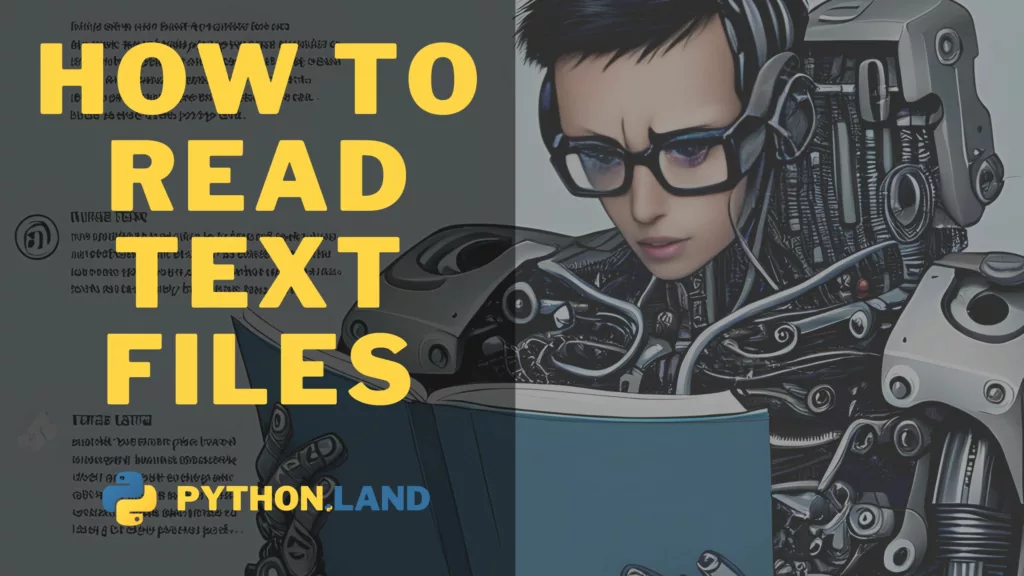Reading text files with Python is a common task and can be done in several ways. In this article, we will cover the most popular methods for reading text files in Python:
Table of Contents
Read a Text File Using with open()
The modern and recommended way to read a text file in Python is to use the with open statement:
- The
withstatement automatically closes the file after the indented block of code is executed, ensuring the file is always closed properly. - The
open()function takes the file path as its only argument and returns a file object that can be used to read the file’s contents all at once with theread()method.
Here is an example of how to open and read a text file in Python this way:
with open('names.txt') as f:
# Read the contents of the file into a variable
names = f.read()
# Print the names
print(names)Code language: Python (python)Read our more extensive articles about using files in Python to learn more.
Using open() and close() manually
The more basic method for reading a text file in Python is to use the open() and close() functions manually. I recommend you use the first method for most cases since you don’t have to worry about closing the file, which can be easily forgotten. Here is an example anyway:
f = open('names.txt')
# Read the contents of the file into a variable
names = f.read()
print(names)
# Don't forget to close the file again
f.close()Code language: Python (python)Read our more extensive articles about using files in Python to learn more.
Read a Text File Using Pandas
If you are working with large text files and need to perform advanced operations on the data, you may want to use the pandas library. This library provides a powerful and easy-to-use DataFrame object that can read and manipulate text files.
To read text files into a DataFrame, the file needs to have a clearly defined format. Since this usually is CSV, let’s focus on that. Here is an example of reading a CSV file into a DataFrame:
import pandas as pd
# Read a CSV file into a DataFrame
df = pd.read_csv('example.csv')
print(df)Code language: Python (python)In addition to reading CSV files, pandas also provides functions for reading other types of text files, such read_json() for reading JSON files, and read_html() for reading HTML tables.
Here’s an example of reading a JSON file into a DataFrame:
import pandas as pd
# Read a JSON file into a DataFrame
df = pd.read_json('example.json')
print(df)Code language: Python (python)Read a Text File Using NumPy
NumPy is a library for working with arrays and matrices of numerical data. It provides several functions for reading text files, including loadtxt() and genfromtxt().
numpy.loadtxt() allows parameters that specify how the data is delimited, which rows and columns to skip, and how to handle missing data. For example, to specify that the data is delimited by commas (typical for a CSV file), you can pass the delimiter parameter:
import numpy as np
# Read a CSV file into a NumPy array
data = np.loadtxt('example.csv', delimiter=',')
print(data)Code language: Python (python)



